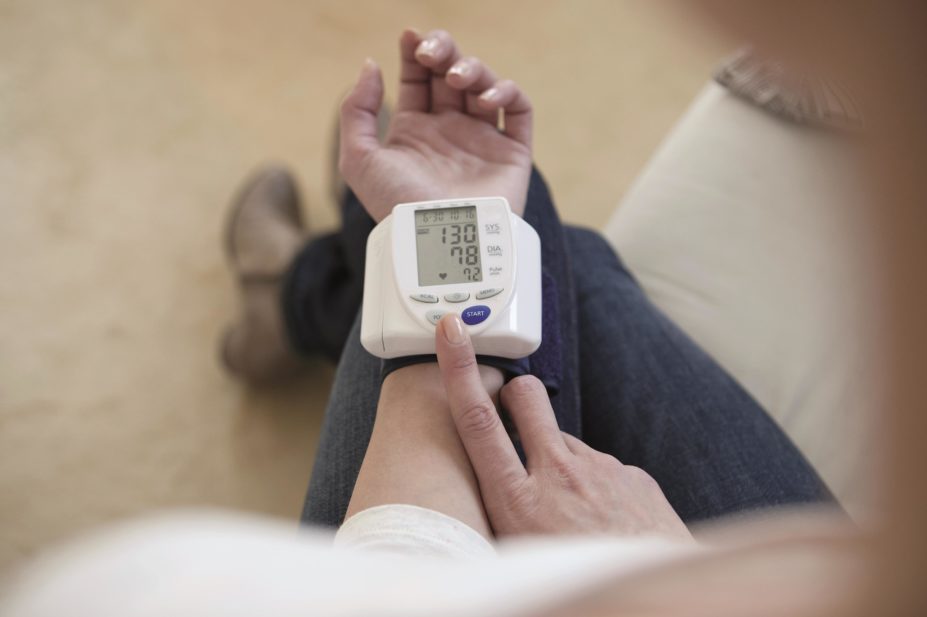
Shutterstock.com
Intensive blood pressure (BP) reduction is more beneficial for patients than less intensive BP reduction, concludes a review published in The Lancet
[1]
on 6 November 2015.
The findings go against several major current clinical guidelines, including those from the UK’s National Institute for Health and Care Excellence and the European Society of Hypertension, which recently raised BP targets from 130/85mmHg to 140/90mmHg for high-risk patients. The findings suggest the target should be lowered to a systolic blood pressure of below 140mmHg.
A total of 19 trials between 1950 and 2015 were included in the review, involving data from 44,989 participants. The beneficial effects of intensive BP reduction were shared by all major patient subgroups included in the trials. The greatest benefits were seen in patients with vascular disease, renal disease or diabetes.
Patients who received more intensive treatment had their blood pressure lowered to 133mmHg, while those on less intensive treatment had their blood pressure lowered to 140mmHg. The more intensive treatment reduced the risk of heart attacks by 13% (95% confidence interval [CI] 0–24) compared with less intensive regimens and there was a 22% reduction in the risk of stroke compared with less intensive regimens (95% CI 10–32). Patients who had a blood pressure less than 140mmHg before the trials benefitted from the more intensive treatment.
The authors of the Lancet review say the study provides clear evidence of the benefits of intensive lowering of BP, including in high-risk patients whose systolic blood pressure is lower than 140mmHg.
“Existing clinical guidelines should be revised accordingly, to recommend more intensive blood pressure-lowering treatment in high-risk patient groups,” the team, led by Anthony Rodgers, professor of global health at The George Institute for Global Health, Sydney, says.
The BP targets in leading clinical guidelines were raised in 2013 following the decision that there was little evidence in favour of lower targets. The decision followed disappointing results from the Action to Control Cardiovascular Risk in Diabetes (ACCORD) trial, in which no significant difference was seen in overall cardiovascular event rates whether patients with type 2 diabetes were assigned to intensive or standard BP-lowering therapy.
The George Institute for Global Health had been recommending a revision of these guidelines before the Lancet review was published. “Many people have said the evidence has been ‘hiding in plain sight’ for a while now — but this will really be a tipping point,” Rodgers says. “The big challenge now is implementing these effective treatments more widely among people at high risk.”
The findings are supported by a second study recently published in The
New England Journal of Medicine
[2]
. The Systolic Blood Pressure Intervention (SPRINT) trial enrolled more than 9,000 people with blood pressure levels above 130mmHg and who were at high risk of heart disease and stroke.
Treatment targets of 140mmHg or less were compared with more aggressive targets of 120mmHg or less. People treated to the lower target had risks of major complications — including death — reduced by a quarter.
Commenting on the Lancet study, Helen Williams, consultant pharmacist for cardiovascular disease in South London, who is also clinical associate for cardiovascular disease at the Southwark clinical commissioning group, says: “This important meta-analysis confirms that there are additional patient benefits from lowering BP beyond the current 140/90mmHg target.
“Overall the blood pressure difference between the less intensive and more intensive groups was only 7/5mmHg but the analysis demonstrated that this delivered significant reductions in the relative risk of cardiovascular events, myocardial infarction, stroke, albuminuria and retinopathy progression, with a small increase in serious adverse effects.”
Noting the two studies, she says: “These data will no doubt have an impact on the current target blood pressures in national and international guidelines. This will represent a challenge for pharmacists in terms of the number of medicines that will be required to achieve these intensive blood pressure reductions, and the need for better adherence support to encourage long-term persistence with anti-hypertensive therapies.”
Bo Carlberg, senior lecturer and physician at the Department of Public Health Medicine at Umea University in Sweden, writing in a comment piece accompanying the Lancet review, says: “This finding will pave the way for the treatment of a large number of additional patients,” adding that about a third of all excess cardiovascular mortality attributable to increased BP is within the normotensive range.
However, Carlberg cautions that it is not clear whether patients with diabetes mellitus, or very elderly patients, will benefit from treatment targets lower than 140/99mmHg. “The definition of new blood pressure treatment targets will not be an easy task, in terms of comorbidity and a specific mmHg target,” he says.
References
[1] Xie X, Atkins E, Lv J et al. Effects of intensive blood pressure lowering on cardiovascular and renal outcomes: updated systematic review and meta-analysis. Lancet 2015. doi:http://dx.doi.org/10.1016/S0140-6736(15)00805-3
[2] The SPRINT Research Group. A randomized trial of intensive versus standard blood-pressure control. New England Journal of Medicine 2015. doi:10.1056/NEJMoa1511939


